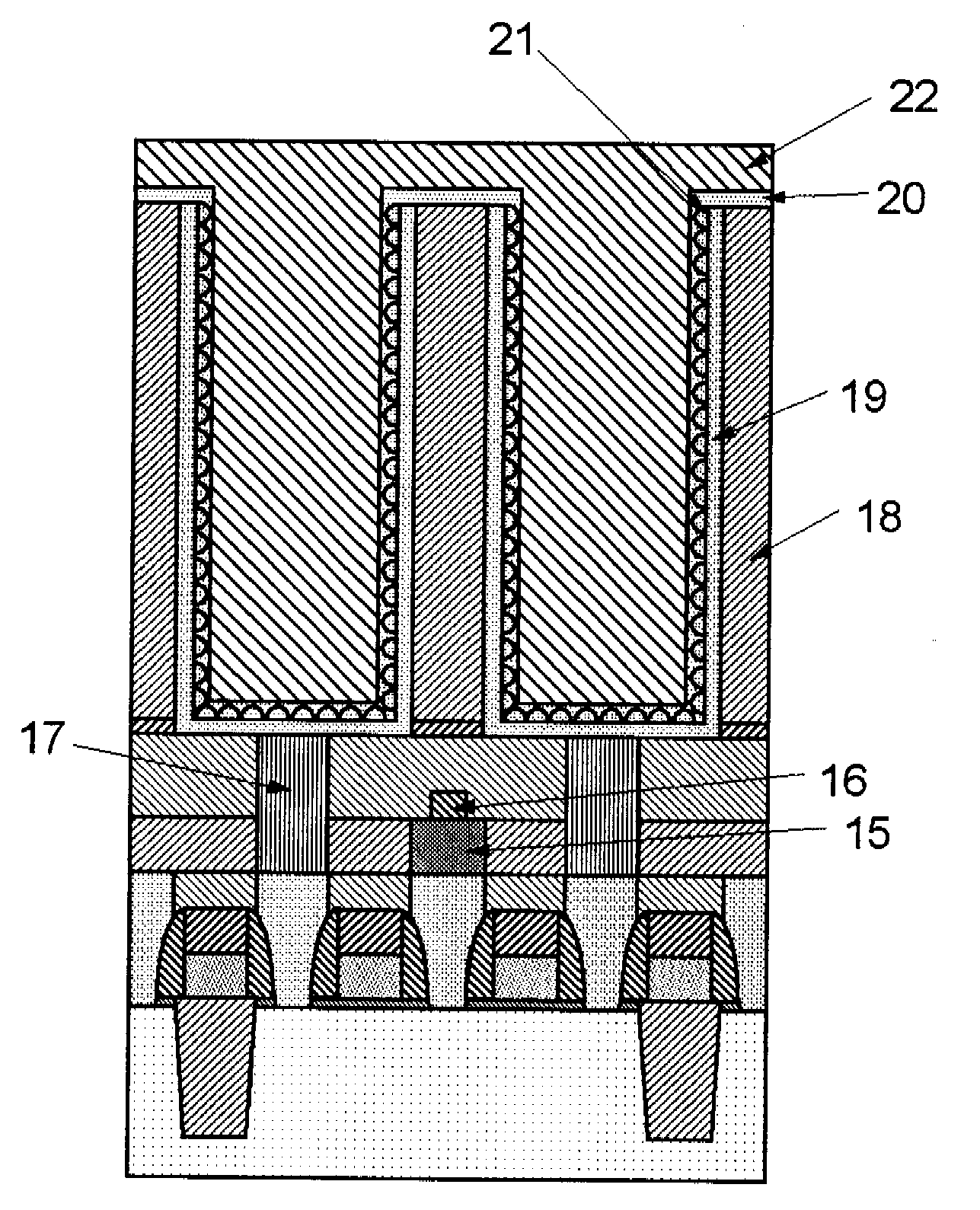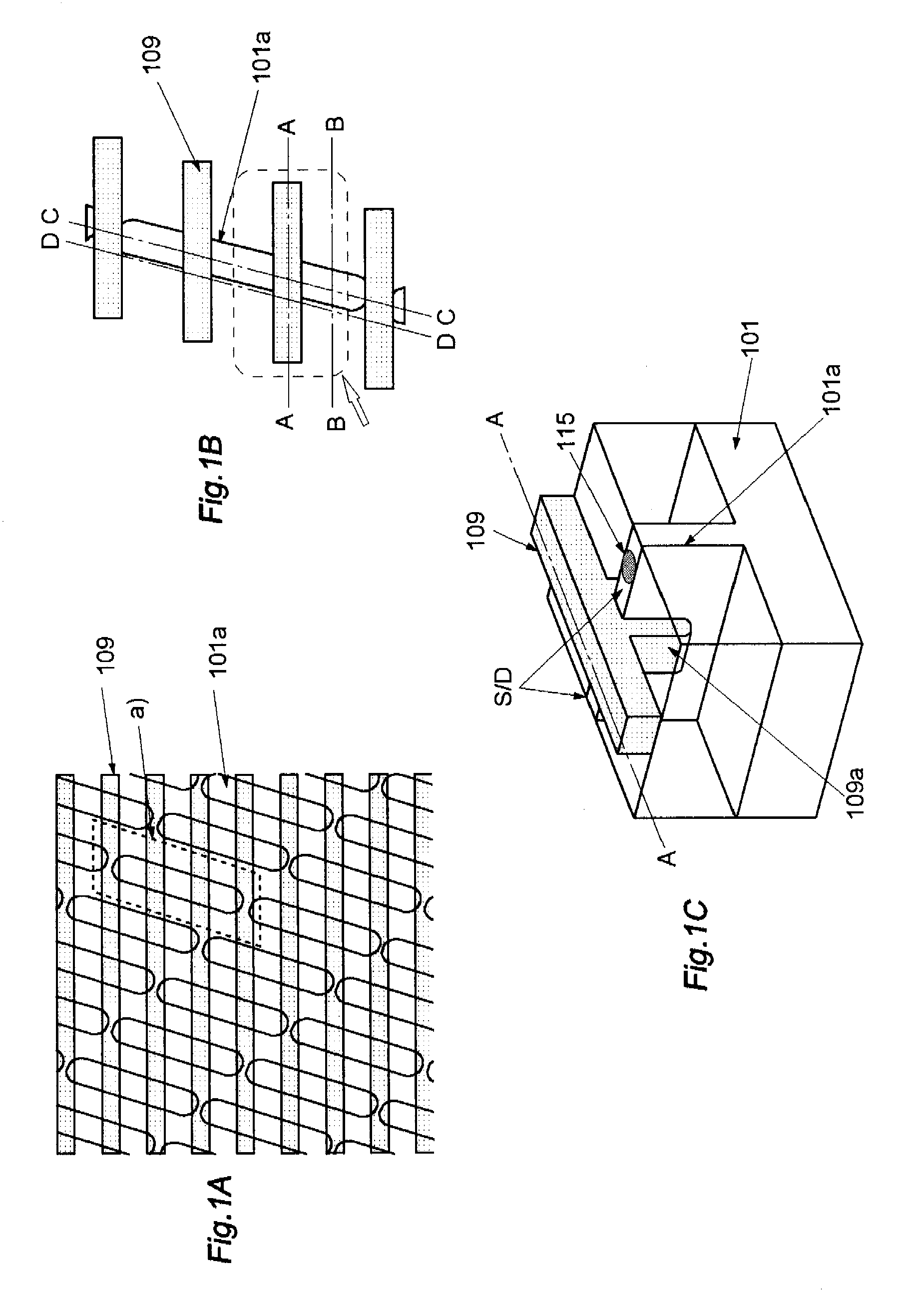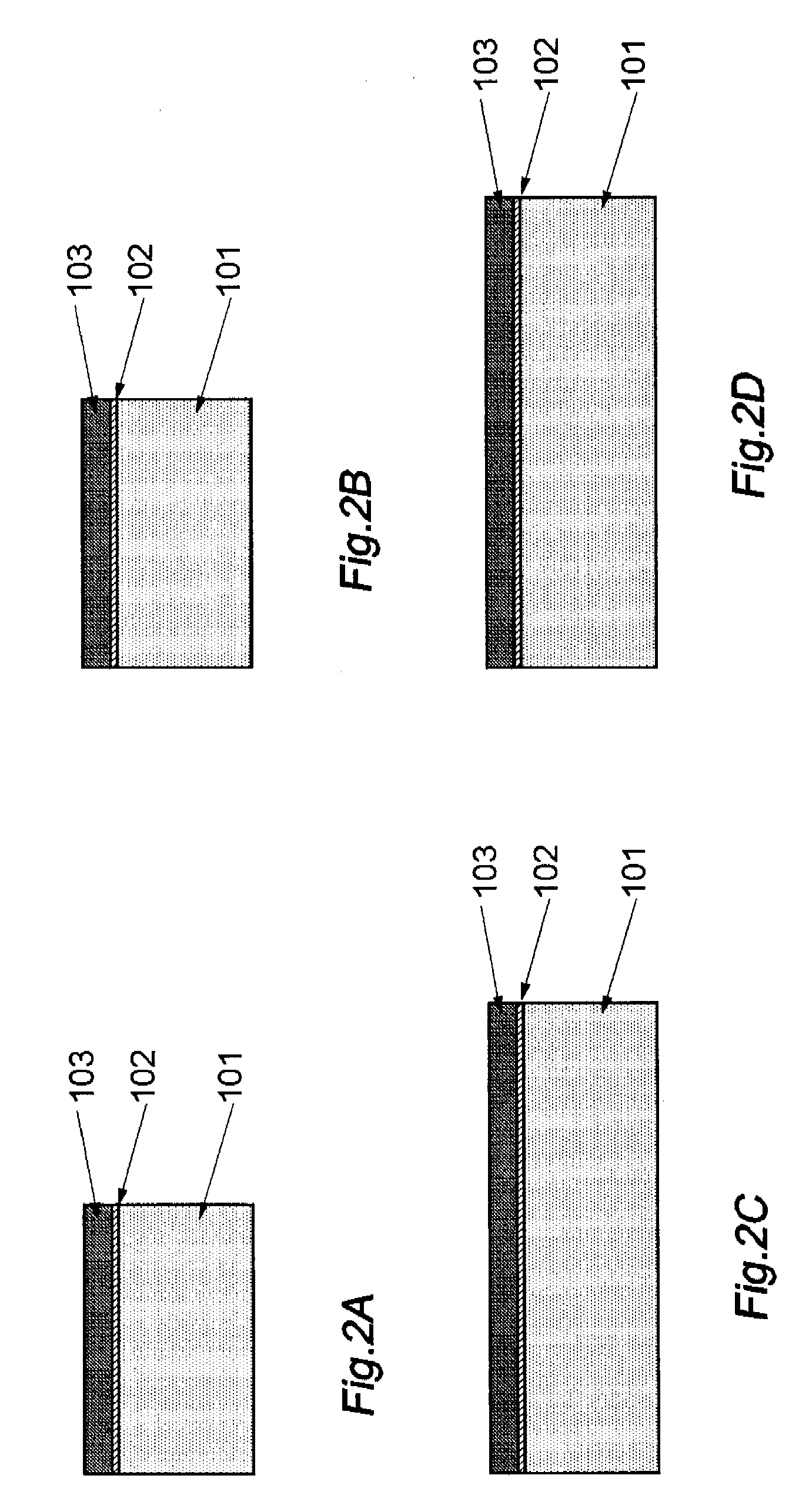Method of manufacturing semiconductor device
a semiconductor and manufacturing method technology, applied in the direction of semiconductor devices, basic electric elements, electrical appliances, etc., can solve the problems of reducing the current (isub>on/sub>), deteriorating the refreshing characteristic, increasing the junction leakage current, etc., to reduce the diffusion of impurities, improve the refresh characteristic, and reduce the contact resistance
- Summary
- Abstract
- Description
- Claims
- Application Information
AI Technical Summary
Benefits of technology
Problems solved by technology
Method used
Image
Examples
first exemplary embodiment
[0061]FIGS. 2 to 8, 10 to 13, and 15 are sectional views of a semiconductor device showing the process of forming a Fin-FET portion for explanation of a first exemplary embodiment of the manufacturing method in accordance with the present invention. FIGS. 2A to 8A, and 10A to 13A, and 15A show sections taken along line A-A in FIG. 1B; FIGS. 2B to 8B, 10B to 13B, and 15B, sections taken along line B-B in FIG. 1B; FIGS. 2C to 8C, 10C to 13C, and 15C, sections taken along line C-C in FIG. 1B; and FIGS. 2D to 8D, 10D to 13D, and 15D, sections taken along line D-D in FIG. 1B.
[0062]As shown in FIG. 2, pad oxide film 102 having a thickness of about 9 nm and field nitride film 103 having a thickness of about 120 nm are first formed successively on semiconductor substrate 101. This field nitride film 103 becomes a mask layer covering a diffusion layer and is also used as CMP stopper for an oxide film in which shallow trench isolation (STI) regions are embedded. Field nitride film 103 and pad...
second exemplary embodiment
[0077]In the first exemplary embodiment, oxidation is performed after trench Si etching to form convex semiconductor layer 101b in which the length in the longitudinal direction, particularly the length of the SN portion is reduced, as shown in FIG. 17, thereby forming cell contact plug holes 13 in three directions: one upper-surface direction and two side-surface directions, and cell contact plug holes 13′ in four directions: one upper-surface direction and three side-surface directions. Thereafter, implantation of impurities, forming of plugs and solid-phase diffusion are performed, as in the first exemplary embodiment, thereby forming cell contacts 14 having side wall portions 14a and connected to bit lines between the gates and cell contacts 14′ having side wall portions 14a′ and connected to storage capacitors in the SN portion. As a result, contact surfaces 15′ can be taken in four directions for capacitor contact 14′ in the SN portion, as shown in FIG. 18B, and a further redu...
PUM
 Login to View More
Login to View More Abstract
Description
Claims
Application Information
 Login to View More
Login to View More - R&D
- Intellectual Property
- Life Sciences
- Materials
- Tech Scout
- Unparalleled Data Quality
- Higher Quality Content
- 60% Fewer Hallucinations
Browse by: Latest US Patents, China's latest patents, Technical Efficacy Thesaurus, Application Domain, Technology Topic, Popular Technical Reports.
© 2025 PatSnap. All rights reserved.Legal|Privacy policy|Modern Slavery Act Transparency Statement|Sitemap|About US| Contact US: help@patsnap.com



